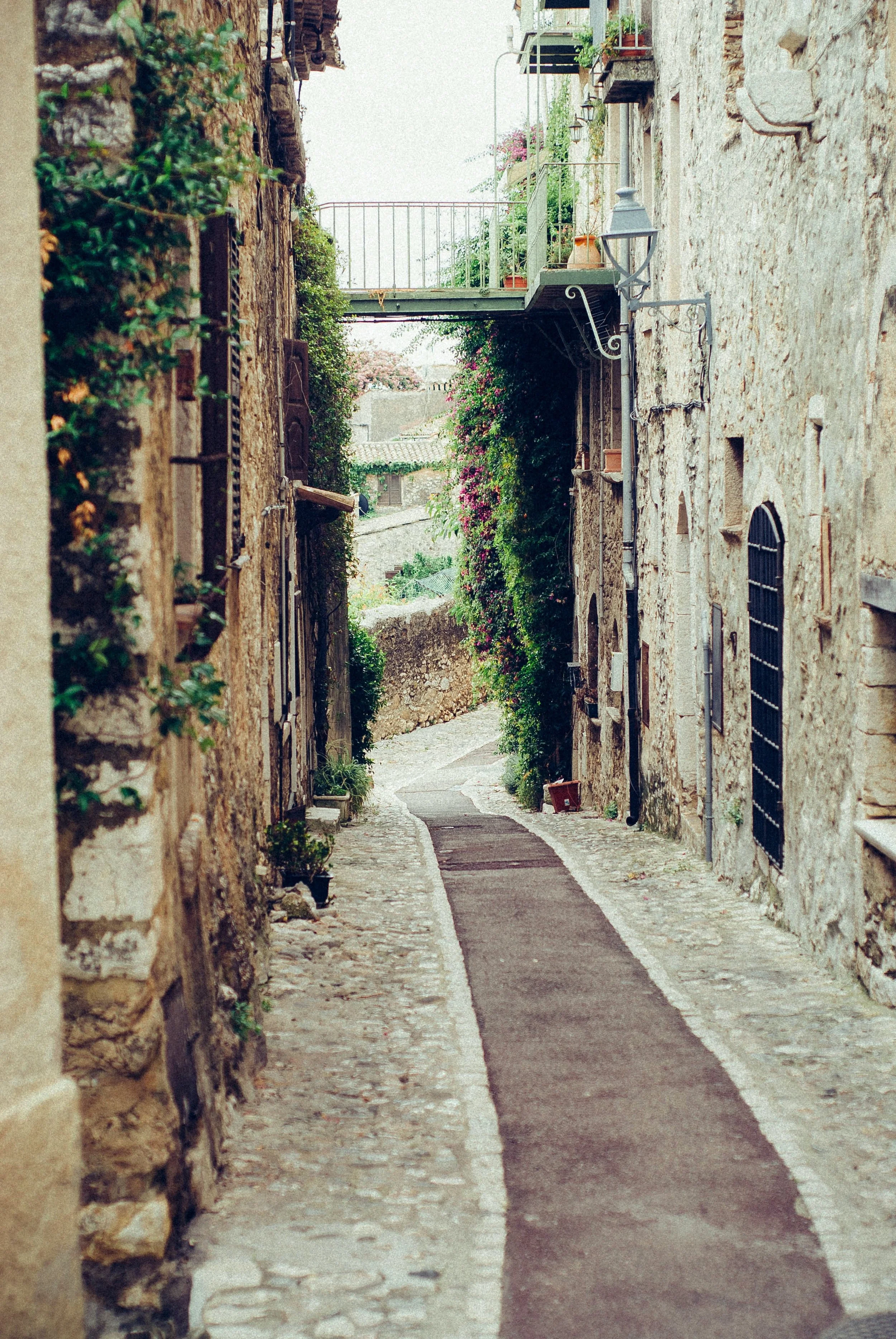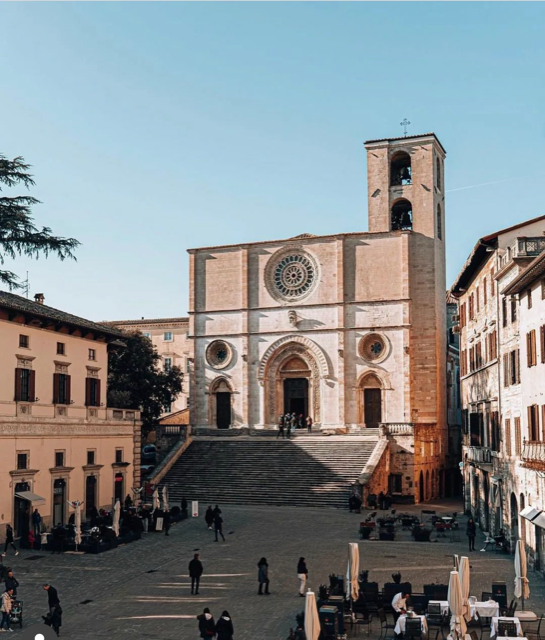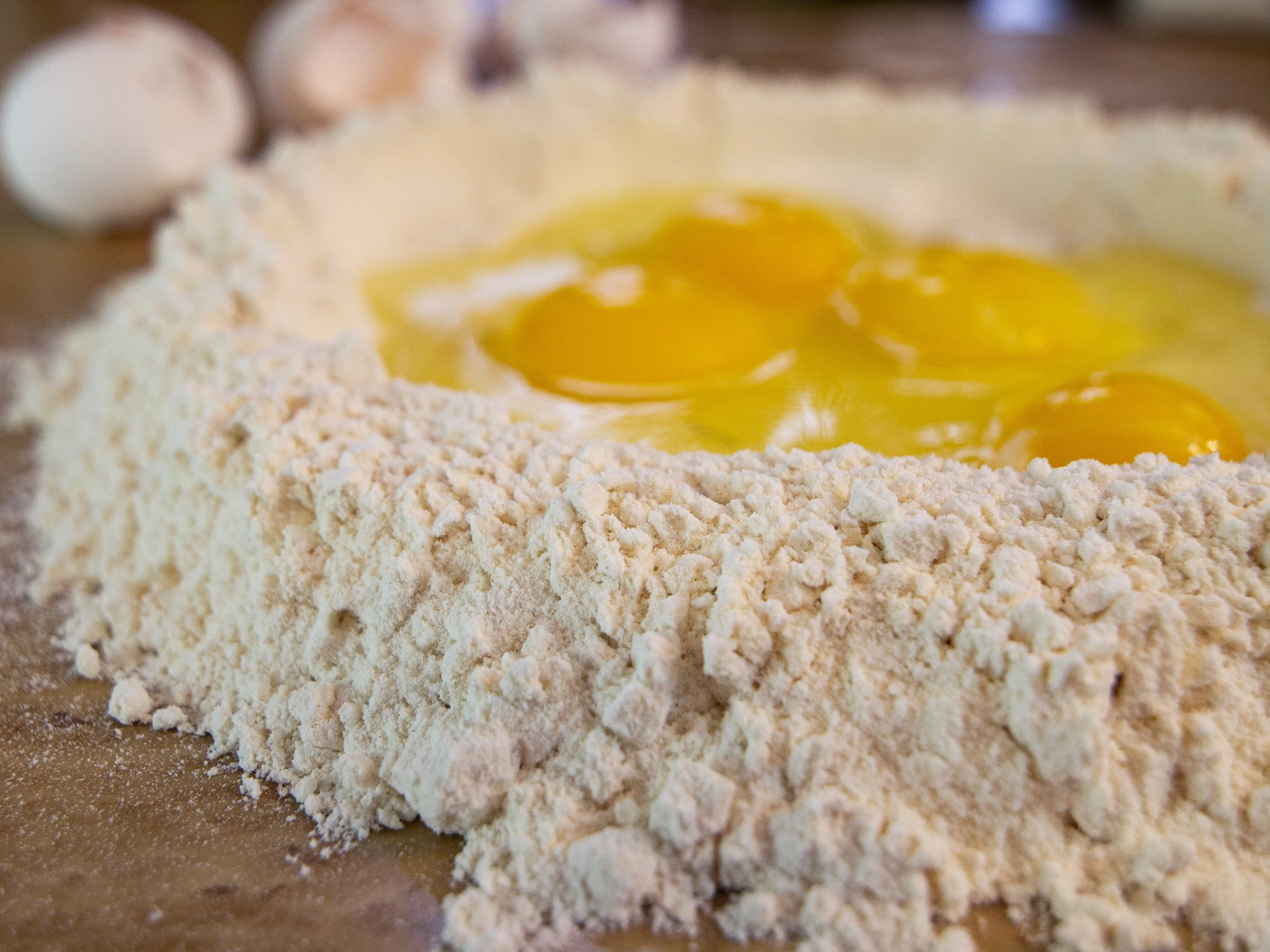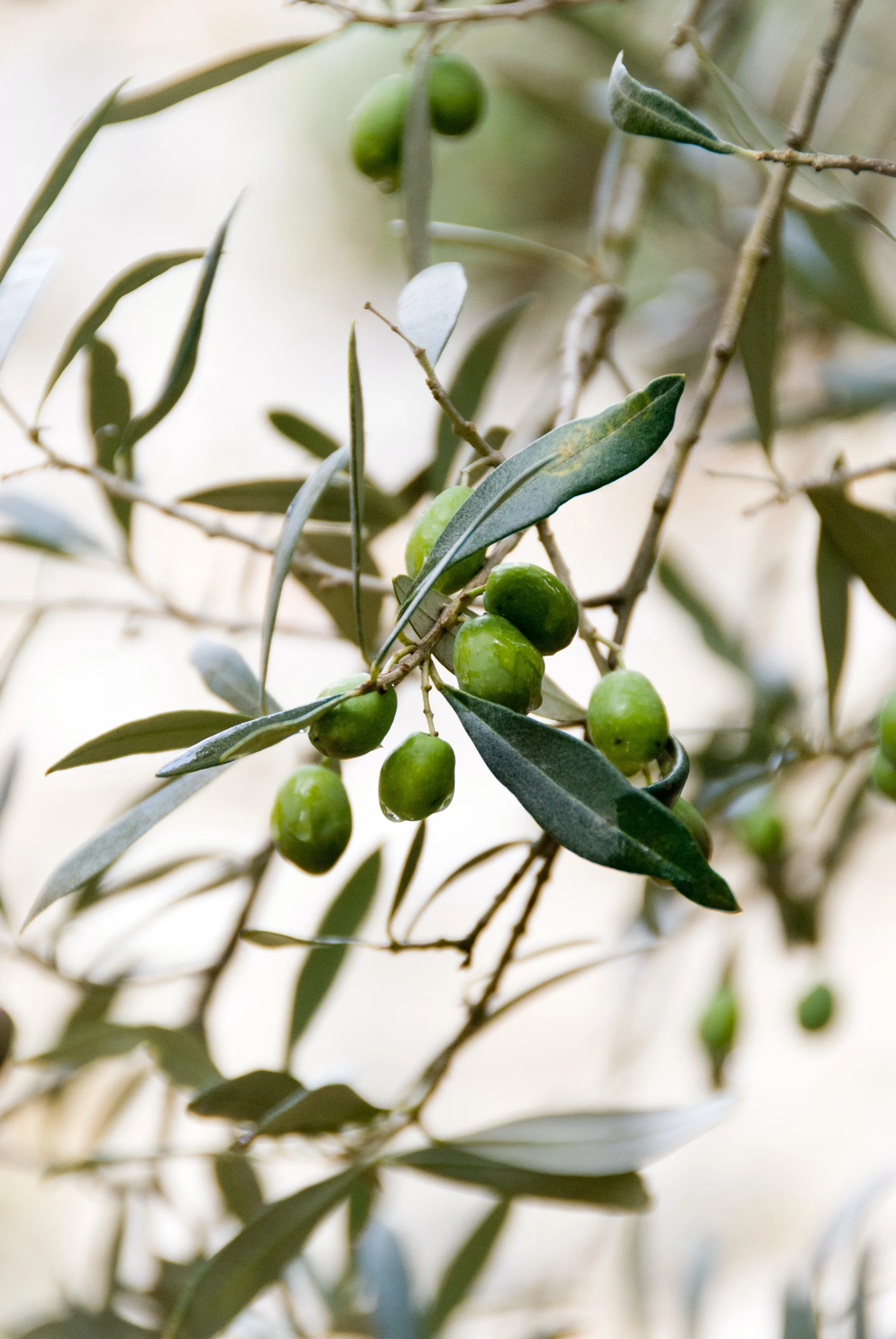
town of todi…
in the region of umbria, italy.
The town of todi- Its history & interest.
Situated in the centre of Italy, Umbria is known as the ‘green heart’ of Italy. At its very core, nestled in the rolling hills of the regions countryside, making it ‘beat’ is the medieval town of Todi.
Since the 7th century BC, Todi has been steeped in centuries of tradition, history and culture and it feels like you have stepped back in time to experience the very essence of Italy upon entering the ancient walls of Todi.
Today, this picturesque town boasts a Spighe Verdi (a ‘Green Spike’ which highlights the vast agricultural heritage of Italy, its landscapes and traditions, as well as its excellent products), and a 1992 nomination as the Worlds Most Liveable City. Making it a truely inspired town, offering the very best of the past, and promise of the future.
According to an ancient local legend, the town of Todi was chosen by a mythical eagle; stealing a table cloth by a picnic-ing family of the Veli-Umbri tribe, it promptly dropped it on the idyllic Umbrian mountain top. Seeing it as a sign from the heavens, the leader of the expedition-Tudero- created the town of Todi, and claiming it as home.
What a beautiful metaphor for those of us who are looking for a home within ourselves, and to take flight in our life. We look forward to sharing all that Todi, and the region of Umbria, has to offer- a stunning location, with endlessly inspiring cultural experiences. Whether it’s wine and food, art and history, architecture and farmers markets, time in nature or lazy days enjoying the countryside…
Everything that brings your heart joy can be experienced during your stay.
the italian village
The Italian village can’t let the year run its course without celebrating a handful of celebrations of church, history, local talent, or just good food and wine.
Todi is no different.
Umbria is a treasure trove of internationally and regionally significant and noteworthy events.
Those listed below represent merely the biggest and most spectacular Umbria and Todi have to offer.
Todi: events & Retreats
Below is annual, seasonal and monthly events of interest. The calendar lists the Sensual Cycle Retreats… that will begin in 2024!
Seasonal Events in Umbria
In Umbria, there is an abundance of unique festivals and events that take place in the area. We’ve hand-picked our selection, which will appeal to jazz and classical music lovers, foodies, truffle-hunters, chocoholics, wine and culture-vultures!
Spring (Apr-Jun)
Italian Antiques show – (mid April) Todi
ArTodi - I grandi artisti che hanno scelto Todi (Apr 16- Sep 11)
16th-century rooms of Palazzo Vignola will host "ArTodi - The great artists who chose Todi”.
Cantine Aperte (May)
Perfect for wine lovers the Cantine Aperte, which translates to Open Wine Cellars, is Italy’s biggest wine event taking place in May.
Flower Festival (May)
Spello – The feast of Corpus Domini (the Body of Christ) is one of the most spectacular events in Umbria. The streets are literally carpeted with flower petals of every imaginable colour both found in nature and dyed.
Romantic Apocalypse Exhibition (May 08- Aug 27)
In Todi, the Galleria Giampaolo Abbondio in Piazza Garibaldi is hosting 'Romantic Apocalypse', Peter Belyi's solo exhibition.
Summer (Jun - Sept)
Truffle hunting expeditions (June)
Todi Castle organises truffle expeditions for all the lovers of the Umbrian countryside, good food and nice smells.
Water Festival (July)
This event, held at the Lake Piediluco, set in the Umbrian Hills, dates back to the extremely ancient tradition of the celebration of the Summer Solstice featuring rites, purification ceremonies and lighting of fires.
Festival dei Due Mondi (June - July)
The Medieval town of Spoleto hosts one of Europe’s most vibrant festivals during the month of July with a remarkable programme of visual arts performances- visitors can enjoy quality concerts of classical music, opera, theatre, ballet, visual arts and cinema at various venues across the beautiful city.
Umbria Jazz (July)
The Umbria Jazz festival is one of the most important jazz festivals in the world and now attracts some of the most famous jazz musicians. For ten days- different musical origins including jazz, soul, blues, gospels, pop and salsa.
Todi- The International Hot Air Balloon Grand Prix (July)
In its 20th year the Italian International Hot Air Balloon Grand Prix, held in Todi.
Summer open air Cinema 2022 (Jul 01- Aug 28)
Super Cinema Estate awaits you at the Terrazza Inferiore del Nido dell’Aquila.
7a edizione Cinema d'essai e paesaggio (Jul 22- Aug 24)
7th edition "Cinema d'essai e paesaggio" will bring great films to Todi.
Rassegna "Note d'Estate" 2022 (Jul 02- Oct 09)
In Todi, the eighth edition of the Rassegna "Note d’Estate".
Todi Arte Festival (August)
The annual Todi Arte Festival, in the last week of August is held in courtyards throughout the city, presenting theatre, music, classical and ethnic dance, art and cultural events.
International Days of Religious Cinema (Aug 05th- 20th)
In Todi, the third edition of the film festival dedicated to the Faith. Meetings and screenings will be held at the Giardino Amici dell’Orto.
Concert by Salvatore Accardo (Aug 21st)
In Todi- Inside the International Green Music Festival, in the evocative Tempio della Consolazione, will be the guest of the illustrious violinist Salvatore Accardo.
Fieramente (Aug 21st)
In Todi- The craft, vintage and creativity market will be held, as every third Sunday of the month, August 21st from 9 to 19 at the Giardini Oberdan.
Todi Off – 6th edition (Aug 28- Sep 03)
The Todi Festival returns with Todi Off, the popular festival of contemporary theater and dance oriented to the training of audiences and artists.
The Edible Planet Summit 2022 (Sept 16th-19th)
In Todi, 150 representatives from around the world will gather to design a new sustainable food structure.
Festival delle Arti 2022 (Aug 26-Oct 02)
The Festival delle Arti returns to Todi, to celebrate Italian video art.
Autumn (Oct - Dec)
Celebration of ‘Made in Italy’ (October)
This nine-day event held in Orvieto each year, celebrates the wine and gastronomic tradition of the ‘Made in Italy’.
Frantoi Aperti (End of October to beginning of December)
The Frantoi Aperti festival, taking place during the first weekend of November, sees the doors open to several mills around Umbria offering visitors the chance to admire the olive trees, talk to producers and learn more about olive oil production through seminars and guided tastings as well as learning the secrets of a Mediterranean diet!
Euro chocolate (October in Perugia)
This annual event will be any chocolate lovers dream! Dedicated to the chocolate for which Perugia is famous, this event comprises chocolate tasting, cooking classes, workshops and chocolate sculpting.
Grape Harvest (Vendemmia) (October)
The grape harvest is a joyful time of year all over Italy. Umbrian winemakers in the area of TodiCastle specialize in Grechetto (white) and Sangiovese (red).
Foliage and Truffle hunting (October)
October and November are the best months to discover the red and gold foliage of the lush Umbrian countryside. At this time of the year this area is also full of wonderful and delicious porcini mushrooms.
Olive Harvest (November). November is the month of the olive harvest in Italy. This means bucolic scenes of crinkly faced farmers shaking their boughs and plenty of extra virgin oil, which can be sampled fresh at the press.
Tasting of Italian Wines (November)
This renowned competition, established in 1981 has now drawn considerable attention for its professionalism and aims to promote both nationally and internationally wine from Umbria. Relax over a dry white Orvieto, produced on lands made fertile by volcanic outpourings or simply take in the pride of the wine producers.
Winter (Dec - Mar)
Umbria Jazz Winter Festival (End December)
The Umbria Jazz Winter Festival delivers five days of great music in the picturesque setting of Orvieto.
Christmas in Umbria (December)
During the Christmas period in Umbria, religious ceremonies, historic commemorations and folklore events are organised. Living nativity scenes can be seen in many towns in Umbria and concerts of classical and jazz music are held in beautiful churches. Visitors will also be able see the world's largest Christmas tree made out of lights in Miranda, (close to Terni )which can be viewed from the valley below. Standing at 800 metres long and 400 metres wide and lit with over 7.5 miles of electric cables, it really is a spectacular sight.
Campagna Amica Market (Jan 01st- Dec 31st)
Every Saturday in Piazzale degli Atti from 7.30 to 14.30
Umbria Carnival (February)
The Umbria Carnival takes place in Guardea and features an elaborate parade with spectacular floral decorations, flags, torches and candles. During the carnival guests may taste sweets typical of Perugia including a frittelle made with honey, sugar and fruits or the struffoli made with small balls of pasta sunk in orange honey and garnished with candies and sugared almonds. (www.carnevalediguardea.net)
Black Truffle Fair (February)
More truffles are found in Umbria than anywhere else in Italy and it is especially famous for black truffles, a specialty of Italian cuisine. The Black Truffle festival held on the last weekend in February is a great time to visit the region and taste the truffles.
Anticamente (Mar 13th-Dec 31th)
Back from 13 March 2022 the Tuderte market
*copied from http://www.casaborgonuovo.com/todi-vicinity
Todi is Featured as a Recommended Destination in Travel & Leisure Magazine
Todi is a beautiful, Medieval hill town located in the central region of Umbria, overlooking the Tiber Valley. The town is located approximately 1 hour and 30 minutes north of Rome and 2 hours south of Florence. Todi is also conveniently nearby Perugia (46km), the University city, known for its annual chocolate festival; the famous wine regions of Orvieto (38km) and Montepulciano; Deruta, known for its classic ceramics, Spoleto (44km), Assisi and several other beautiful hill towns.
While Todi is frequented by tourists, it is mainly occupied by its locals — young and old — who give Todi its true ambiance, flavor and culture. Among the local people are the ancient buildings they reside in and the many seasonal festivals and events they celebrate. Todi also has a cosmopolitan quality – it has the largest piazza in Italy, high-end boutiques, art and antique galleries, fantastic trattorias and cafés and several high-end hotels. Many actors, artists and writers also reside in and around Todi and it is sometimes referred to as “Todiwood”!
Historic walls of Todi
The triple walls of Todi are still easy to make out. The innermost wall, built of rough grey travertine stone, is Umbrian or Etruscan, the middle wall is Roman, and the outside wall dates from the 6 C or 7 C.
The Duomo (cathedral) of Todi
The Cathedral (11 C) is a Gothic structure showing Lombard influence and built on the site of a Roman building, probably a temple dedicated to Apollo. The current church was almost totally rebuilt after a fire in 1190. The main feature of the squarish façade is the rose-window, added in 1513. The church is in the form of a Latin cross and houses a fresco by Ferraù Faenzone depicting the Universal Judgment – large size rather than artistic merit being its main characteristic. The choir includes the Gothic altar and a magnificent wooden choir-enclosure (1521) with two floors. There is also a 13 C Crucifixion of Umbrian school.
Palazzo del Popolo of Todi
The Palazzo del Popolo is a Lombard-Gothic construction from before 1213, and is one of the most ancient communal palaces in Italy. It is composed of two great halls: the “Sala Grande Inferiore” or “Sala delle Pietre” and the “Sala Grande Superiore“.
Palazzo del Capitano of Todi
The “Captain’s Palace”, in Italian Gothic style, was built around 1293 and is on two distinct levels. The first floor housed the Justice Hall, with the Judges’s offices in the lower. The latter is now occupied by the City Museum and some rooms are frescoed with histories of the city and portraits of its most illustrious men.
Palazzo dei Priori of Todi
This palazzo is located in the southern side of the Piazza, facing the Cathedral. It was began in 1293 and later enlarged as seat of the podestà, priors and the Papal governors. The trapezoidal tower was originally lower, and had Guelph merlons. The façade includes a big bronze eagle by Giovanni di Giliaccio (1347).
Palazzo Vescovile of Todi
The Palazzo Vescoville is located at the left of the Cathedral and was built in 1593 by Cardinal Angelo Cesi at his own expense. His crest is visible over the great portal, attributed to Vignola. The upper floors include a room frescoed by Faenzone and a gallery frescoed by Andrea Polinori in 1629.
Church of San Fortunato
The Church of San Fortunato and the sparse ruins of a mediaeval fortress (Rocca) lie on the other crest of the hill on which the city is built. San Fortunato is a Palaeo-Christian temple (7 C) of which two lion sculptures on the entrance portal remain. In 1292, the construction of a new Gothic edifice was begun by the Franciscans. Construction was suspended during the plague of 1348. The lower part of the façade was finished in the second half of the 15 C. The nave and the two aisles have one portal each. These are enriched by fine decorations portraying saints and prophets, with briars representing Good (the vine) and Evil (the fig). The whole apse is occupied by a wooden choir finished in 1590 by Antonio Maffei, from Gubbio. The crypt houses a sepulchre containing the remains of St. Fortunato and other saints, as well as the tomb of Jacopone da Todi. Another noteworthy work of art is a Madonna and Child by Masolino da Panicale.
Church of Santa Maria della Consolazione
Todi’s most striking church is on the flank of the city hill, just outside the walls: the beautifully-sited, domed Renaissance church of Santa Maria della Consolazione (began in 1508), often attributed, although without sufficient reason, to Bramante. It has a Greek cross plan: three apses are polygonal and that on the north side is semicircular. Architects who worked build this church include Cola da Caprarola, Antonio da Sangallo the Younger, Baldassarre Peruzzi, Galeazzo Alessi, Michele Sanmicheli, Vignola and Ippolito Scalza. The church was inaugurated in 1607. The apse is surmounted by a square terrace with four eagles at the corners, from which the dome rises. In the interior, the altar houses a miraculous image of the Madonna, which, according to the tradition, was discovered by a worker during the laying of the foundations. Twelve niches in the first three apses house giant statues of the apostles. Also noteworthy is the wooden statue of Pope Martin I, a native of the Todi area.
https://www.visitodi.eu/en/events.html
Umbria’s Produce
Umbrian wine
Red Sagrantino of Montefalco is one of the finest expressions of Italian wine making today, holding its own in any confrontation.
Orvieto’s white wines have also graced dining tables around the world following its popularity with Roman emperors and Popes.
Olive Oil
Wholly underrated internationally, Umbria’s olive oil has already established itself as one of Italy’s leading producing areas.
Trevi has quietly been the reference point of all experts, tasters and gourmets!
Prosciutto
Norcia is the most famous place for Umbrian prosciutto production thanks to its particular climatic conditions of its territory and to the skill of the local artisans. It is not by chance that the name norcino used in the whole of Italy is used together with or, instead of butcher. In fact, Norcia's artisans have become the Italian ambassadors for a particular type of prosciutto , named salted or 'from the mountains'.
Truffles
Known as one of the most expensive ‘condiments’ in the world, the black, and the more highly-prized white truffle, are best-known as Umbria’s golden nuggets. Best grated over fresh fettucini pasta with no other condiment other than fine extra virgin olive oil, there’s very little else left to the gourmet palate. Not trying it would be a sacrilege!





